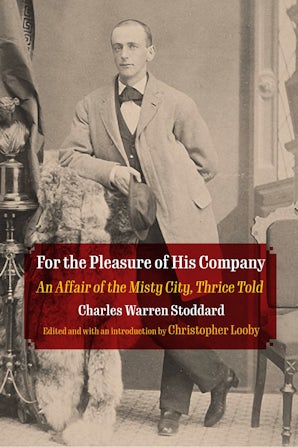
For the Pleasure of His Company
An Affair of the Misty City, Thrice Told
by Charles Warren Stoddard, Christopher Looby
Charles Warren Stoddard (1843–1909) was, during his life, an acclaimed and prolific writer in multiple genres: poetry, travel sketches, personal memoir, and conversion narrative. His most popular works were dispatches primarily from the South Sea Islands but also extended into Palestine, Egypt, and what would become known as Hawai‘i, most of which were published in the San Francisco Chronicle and then collected into books.
For the Pleasure of His Company: An Affair of the Misty City, Thrice Told (1903) is Stoddard’s only novel. This new edition, as with other works in Penn Press’s series Q19: The Queer American Nineteenth Century, returns and reframes an important queer literary text to print. Set mostly in and around San Francisco in the late nineteenth century, the novel features a protagonist, Paul Clitheroe, who is an aspiring writer living among the Bohemian artistic circles of that place and time—the same circles Stoddard himself inhabited. The novel is both formally experimental and largely autobiographical. Thus Paul comes into contact, as Stoddard did, with writers, artists, actors, directors, priests, adventurers, and many others as he attempts to begin his career. Bohemian artistic life and erotic experimentation go hand in hand here: Paul has multiple relationships with other men even as he writes a novel that features similar liaisons. At the very end of the story, while on a cruise in the Pacific, Paul impulsively leaves his ship and disappears in a canoe with some young Hawaiian men. This parallels Stoddard’s life too: he spent many long periods of his life in Hawai‘i, where he found the local homoerotic customs to his liking.
This Q19 volume also includes three of Stoddard’s Hawaiian travel sketches, which chronicle his intimate personal relationship with a Hawaiian youth he calls Kána-Aná. The volume contains a full critical introduction as well as extensive annotations explaining textual references of various kinds and identifying parallels with Stoddard’s own life.
